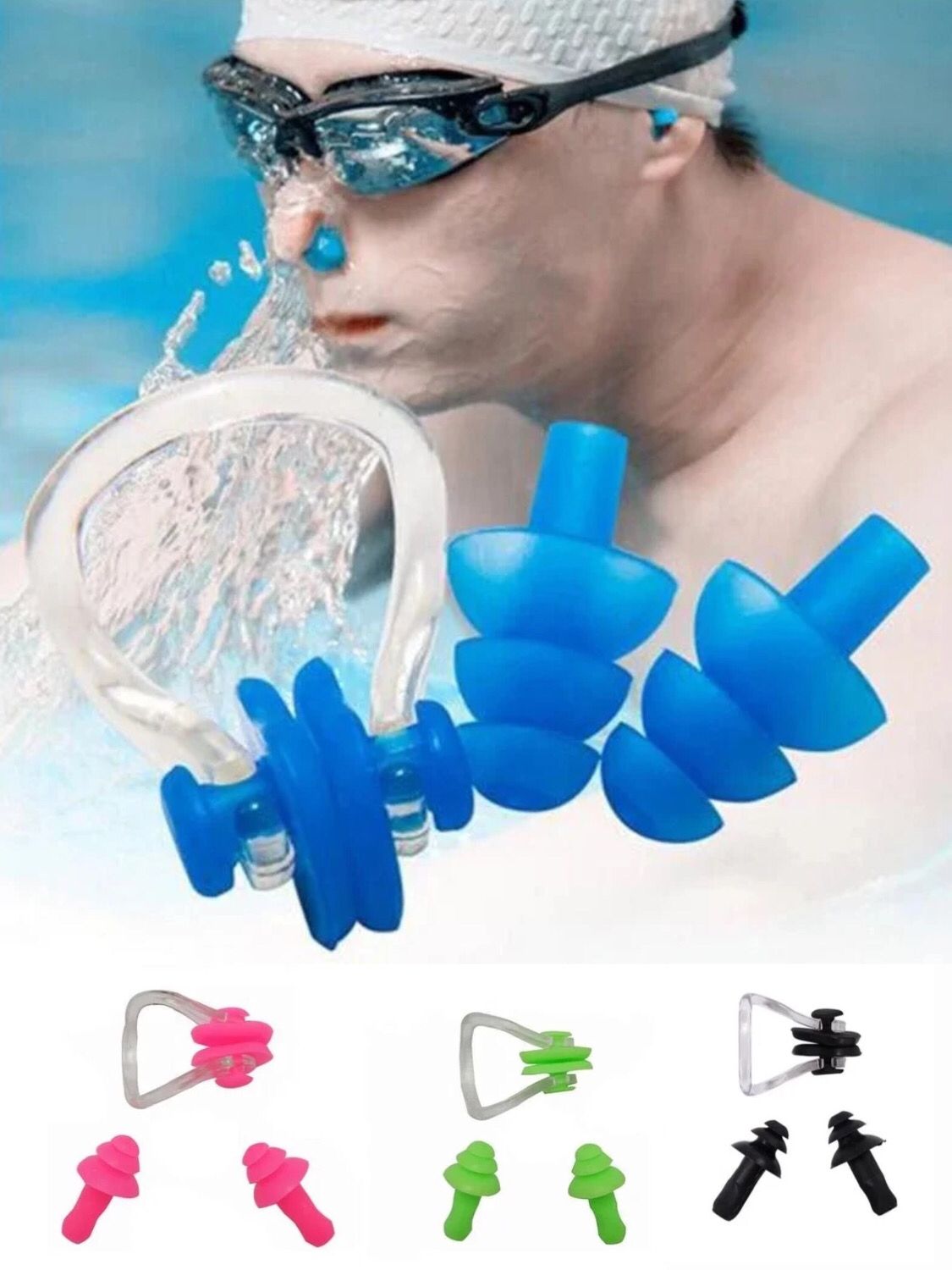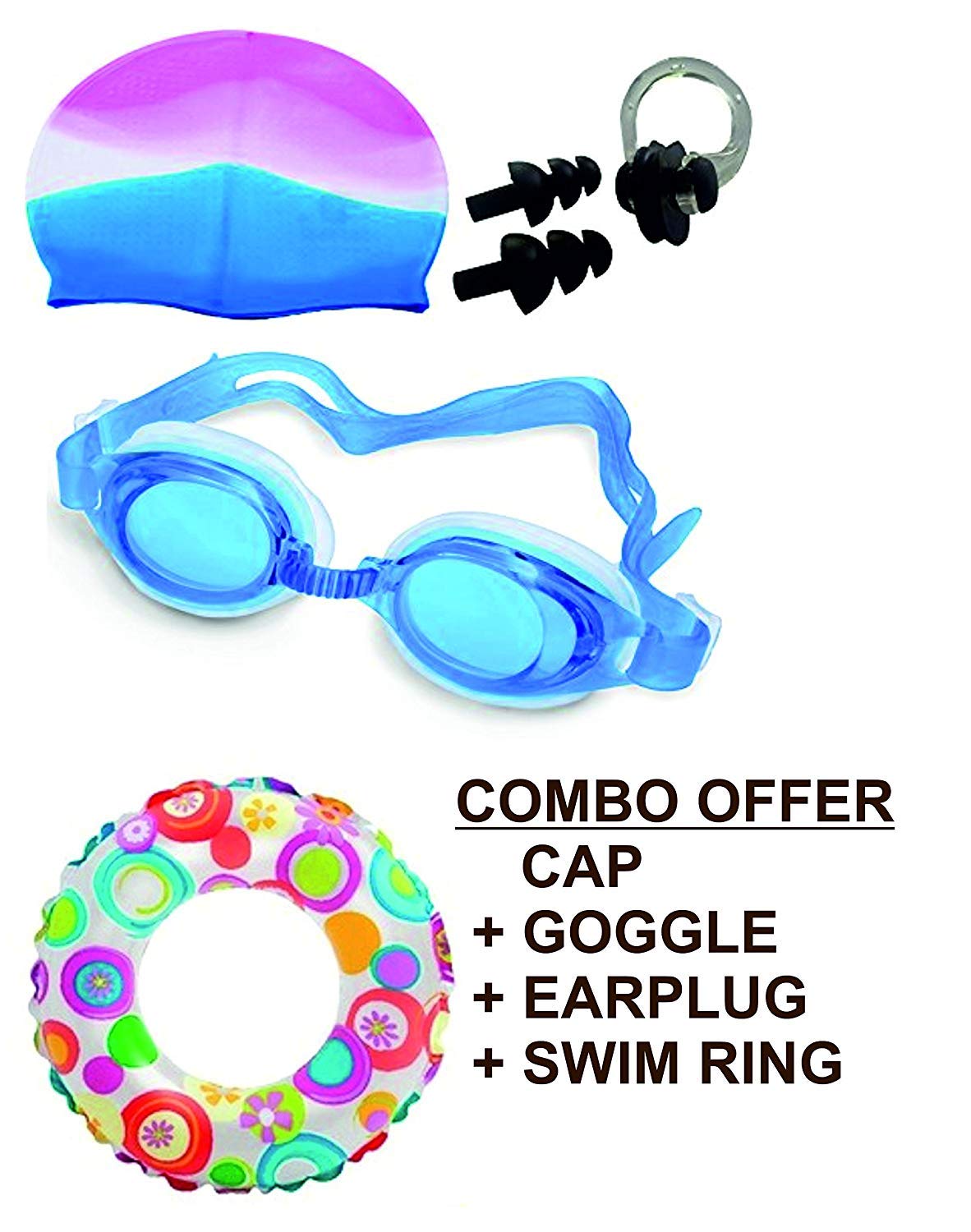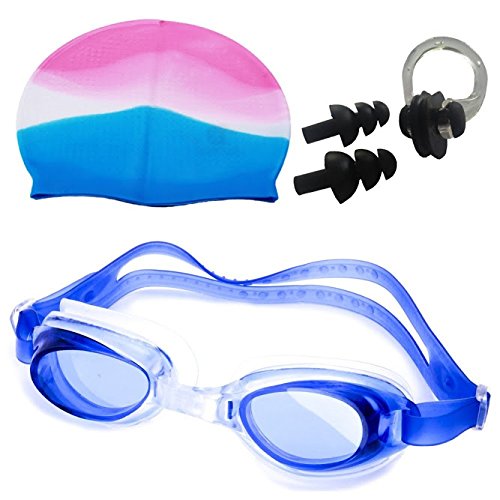Buy Swimming Ear Nose Protechtion Online
Shop Swimming Ear Plugs & Swimming Nose Clip Online In India
Swimming is a great form of exercise and leisure activity,
but it can also expose your ears and nose to water and bacteria. This is where swimming ear nose protection comes in. Earplugs and nose clips are essential
pieces of equipment for swimmers who want to prevent infections and protect their ears and nose from water and irritants.
Swimming Ear Protection
Earplugs are small devices that fit snugly into the ear
canal to prevent water from entering. They come in different shapes and sizes to accommodate different ear shapes and sizes. There are two types of earplugs
– silicone and foam. Silicone earplugs are reusable and can last for months,
while foam earplugs are disposable and need to be replaced after each use.
Nose Protection
Nose clips are small devices that are placed over the
nostrils to prevent water from entering the nose. They are usually made of
silicone or plastic and come in different shapes and sizes to fit different nose shapes and sizes. Nose clips can be easily adjusted to ensure a
comfortable and secure fit.
Benefits of Swimming Ear Nose Protection:
Ear Nose Protection Prevent Infections:
Swimming ear nose protection helps prevent infections by keeping water and bacteria out of the ear and nose.Comfortable and Secure Ear Nose Protection:
Earplugs and nose clips are designed to fit snugly and comfortably, ensuring a
secure fit that doesn't interfere with your swimming performance.Easy to Use Ear Nose Protection:
Swimming ear nose protection is easy to use and requires no special skills or training.
Simply insert the earplugs into your ears or clip the nose clip over your
nostrils.Ear Nose Protection Protect Against Irritants:
Chlorine
and other chemicals used to disinfect pool water can irritate the nose and
ears, causing discomfort and even infection. Swimming ear nose protection can
help prevent these irritants from entering the nose and ears.Ear Nose Protection Improve Focus:
Swimming
ear nose protection can help improve focus by reducing distractions from water
entering the nose and ears. This can lead to a better swimming experience and
improved performance.Ear Nose Protection Ideal for Children:
Children
are more prone to ear and nose infections due to their smaller ear and nose
canals. Swimming ear nose protection can help protect them from infections and
ensure a safe and enjoyable swimming experience.
Tips for Using Swimming Ear Nose Protection:
- Make sure earplugs and nose clips fit securely and
comfortably. - Clean earplugs and nose clips after each use to prevent the growth of bacteria.
- Replace foam earplugs after each use.
- Check earplugs and nose clips for damage before each use.
- Avoid using earplugs and nose clips if you have ear or nose infections.
- Don't share earplugs and nose clips with others to prevent the spread of infection.
In conclusion, swimming ear nose protection is essential for swimmers who want to prevent infections and protect their ears and nose from
water and irritants. Earplugs and nose clips are comfortable, easy to use, and offer a range of benefits that can improve your swimming experience. With the
right ear nose protection, you can enjoy a safe and comfortable swimming
experience, whether you're swimming for leisure or competing at a high level.
Types of Swimming Ear Nose Protection
Swimming ear and nose protection is essential for anyone who
participates in water activities. Whether you are a professional swimmer, a
recreational swimmer, or a beginner, it is essential to protect your ears and
nose from the water and its harmful bacteria. In this article, we will discuss
the different types of swimming ear and nose protection available.
- Earplugs are one of
the most common types of ear protection used by swimmers. They are designed to
fit snugly into the ear canal and prevent water from entering the ear. Earplugs
can be made from a variety of materials, including silicone, foam, and wax.
Silicone earplugs are the most popular, as they are soft, durable, and easy to
use. Foam earplugs are also popular, as they are cheap and disposable. Wax
earplugs are less common but can be an effective option for swimmers with
sensitive ears. Swim caps:
Swim caps are another form
of ear protection used by swimmers. They are designed to cover the ears and
prevent water from entering. Swim caps can be made from a variety of materials,
including latex, silicone, and lycra. Latex swim caps are the most common, as
they are cheap and easy to find. Silicone swim caps are more durable and
comfortable, but they can be more expensive.Headbands:
Headbands are another form of ear protection used by swimmers. They are designed to cover the ears and keep
them warm, as well as prevent water from entering. Headbands can be made from a
variety of materials, including neoprene and lycra. Neoprene headbands are the
most popular, as they are warm, comfortable, and durable.Nose clips:
Nose clips are a common
form of nose protection used by swimmers. They are designed to clip onto the
nose and prevent water from entering. Nose clips can be made from a variety of
materials, including plastic, silicone, and metal. Plastic nose clips are the
most common, as they are cheap and easy to find. Silicone and metal nose clips
are more durable and comfortable, but they can be more expensive.Full-face snorkel masks:
Full-face
snorkel masks are a newer form of ear and nose protection used by swimmers.
They are designed to cover the entire face, including the nose and mouth, and
provide a clear view of the underwater environment. Full-face snorkel masks can
be made from a variety of materials, including silicone and polycarbonate. They
are becoming more popular among swimmers, as they provide a more comfortable
and natural swimming experience.
In conclusion, there are many different types of swimming ear and nose protection available. The type of protection that is best for you will depend on your personal preferences, the type of water activity you are
participating in, and your level of comfort in the water. It is important to
choose a form of protection that is comfortable, effective, and durable, and
that will help keep you safe while you are swimming.
FAQs about Swimming Ear plug and Nose Plug
Here are some frequently asked questions about Swimming Ear plug and Nose Plug:
What is swimming ear and nose protection?
Swimming
ear and nose protection are devices that help to prevent water from entering
the ears and nose while swimming.Why do I need ear and nose protection while
swimming?
Water entering your ears and nose can cause infections and
other health problems. Ear and nose protection can help prevent these issues.What are some types of ear and nose protection for
swimming?
Some types of ear and nose protection for swimming include
ear plugs, nose clips, and swim caps.Can I use the same ear and nose protection for
both pool and open water swimming?
Yes, you can use the same ear and
nose protection for both pool and open water swimming.Can ear and nose protection be used by swimmers of
all ages?
Yes, ear and nose protection can be used by swimmers of
all ages.Can ear and nose protection be used by both
professional and recreational swimmers?
Yes, ear and nose protection
can be used by both professional and recreational swimmers.How do I choose the right ear and nose protection
for me?
You can choose the right ear and nose protection by
considering your specific needs, such as the type of swimming you do, the level
of protection you need, and your personal preferences.What are the different types of ear plugs for
swimming?
Some types of ear plugs for swimming include silicone ear
plugs, foam ear plugs, and custom-molded ear plugs.How do I insert ear plugs for swimming?
To insert ear plugs for swimming, roll the ear plug between your fingers to compress it, then insert it into your ear canal and hold it in place until it
expands to fit.How do I clean ear plugs for swimming?
To
clean ear plugs for swimming, rinse them with clean water and let them air dry.What are nose clips for swimming?
Nose
clips for swimming are devices that fit over your nostrils to prevent water
from entering your nose while swimming.How do I choose the right nose clip for me?
You
can choose the right nose clip by considering your specific needs, such as the
shape of your nose and your personal preferences.How do I use a nose clip for swimming?
To use a nose clip for swimming, place the clip over your nostrils and adjust it
until it fits comfortably.Can nose clips cause discomfort or pain?
Nose clips can cause discomfort or pain if they are not adjusted properly or if they
do not fit well.- Swim caps are
tight-fitting caps that swimmers wear to cover their hair and reduce drag while
swimming. What are swim caps made of?
Swim caps
can be made of latex, silicone, or other materials.How to choose the right swim cap for me?
You
can choose the right swim cap by considering your specific needs, such as the
material, the level of compression you need, and your personal preferences.How do I put on a swim cap?
To put on a
swim cap, first wet your hair, then stretch the cap over your head, starting at
your forehead and pulling it down to the back of your head.Can swim caps cause discomfort or pain?
Swim
caps can cause discomfort or pain if they are too tight or if they pull on your
hair.How do I care for my swim cap?
To care
for your swim cap, rinse it with clean water after each use and let it air dry.Can I use ear and nose protection if I
have a perforated eardrum or other ear or nose conditions?
You
should consult with your healthcare provider before using ear and nose protection if you have a perforated eardrum or other ear or nose conditions.
Also Check: Night Suit | Women Tank Top | Girls Cycling Shorts
Lets Treat Yor'self. Happy Poftik Shopping.



